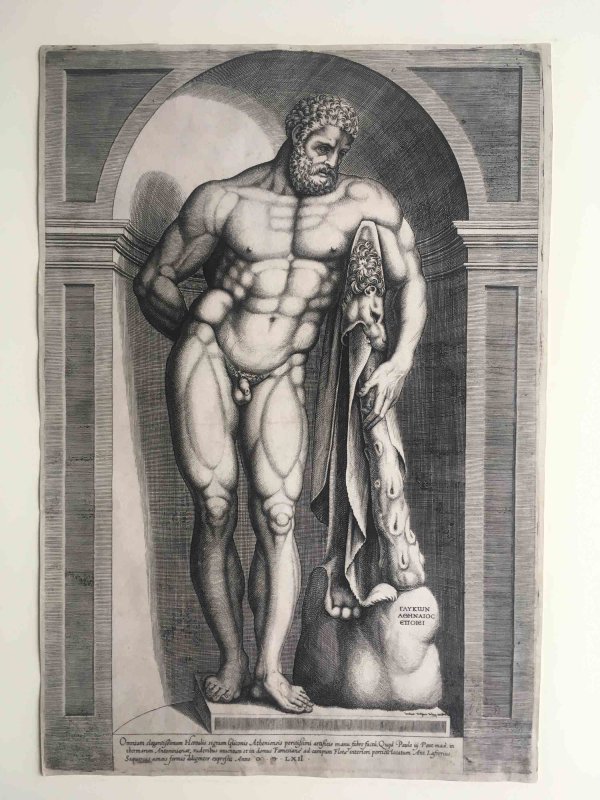Behind The Print | Farnese Hercules by Jacob Bos


Jacob Bos was born in ‘s-Hertogenbosch in southern Netherlands, and was active in Rome from c. 1549 onward at a time when recently-excavated antique statuary had captured the fascination of scholars, collectors, and artists alike. Bos engraved antiquities and maps of Rome for publishers who recognized the growing interest and his works were influenced by Marcantonio Raimondi (b. 1480–d. bet. 1527 and 1534), an artist of the previous generation whose engravings after antiquity were popular among collectors.
The inspiration for this magnificent and extremely rare engraving was the famous so-called Farnese Hercules statue, a marble copy after a fourth-century BCE bronze sculpture by Lysippos, found in the 1540 excavation of the Baths of Caracalla. The statue was quickly appropriated by the politically powerful Farnese Family, and placed in their palace in Rome, sometime before 1556 (precisely when Bos was also in Rome), hence the name of “Farnese Hercules”. In his engraving, Bos translates the knobby marble musculature of the statue into a web of precisely incised lines that swell and taper to closely describe the contours of the source material. The success of Bos’ labor is preserved in the clarity of the lozenges, dots, and grids that define shadows and highlights in this superb impression. Additionally, on the verso of this sheet is a counter-proof of an engraved battle scene, which appears to be contemporary with the above engraving, suggesting that it was produced or previously bound with other prints.
Impressions of Bos’ engraving appear in iterations of the “Speculum Romanae Magnificentiae”, a compendium of prints initiated by the publishers Antonio Lefreri (1512–1577), and Antonio Salamanca (1479–1562) documenting art works, architecture and city views related to antique and modern Rome. These engravings could be bought individually by tourists and collectors but were also purchased in larger groups and were often assembled and bound together in an album according to the individual preferences of the collector. In this sense, Bos’ engraving exemplifies an intensified interest in Greco-Roman antiquity that is traditionally considered to be a hallmark characteristic of Renaissance art.
For an example of the “Speculum Romanae Magnificentiae” that includes Bos’ engraving, see the digital collections at the University of Chicago here and here.
Courtesy of R. S. Johnson Fine Art, Chicago.
